
Online Experiential Science Lessons
Smart Science® Experiential Science/STEM Catalog
All Smart Science® Experiential Science Lessons
Details of Smart Science® Experiential Science Lessons
INTRODUCTORY EXPERIENTIAL SCIENCE LESSONS
- SI Units – Basic metric units
- Simple Graphs – In-class and virtual data from straight line graphs
- Changing Graphs – Understanding broken straight line graphs
- Volume Graphs – Graphs with volume as an independent variable
- Weight Graphs – Weight and number of items illustrates averaging
- Random Errors – Observing and analyzing random errors
- Systematic Errors – Simple illustration of systematic error
- Chi-Square – A do-it-yourself activity for learning to use chi-square tests
- Measurement – Practice taking measurements from common lab equipment
- Balance Construction – Build your own analytical balance from common materials
BIOLOGY EXPERIENTIAL SCIENCE LESSONS
- Cell Metabolism – Effect of sugar, temperature on metabolic rate
- Diffusion in a Gel – Observe shapes of diffusion curves
- Bacterial Growth – Observe impact of limiting nutrients on growth of bacteria
- Mitosis – Learn to classify phases of mitosis
- Meiosis – Learn about meiosis and its phases
- Stem Structure – Identify tissues and cells in stem cross sections
- Crossing Over – Explore crossing over during meiosis in Sordaria fimicola
- Natural Selection – You’re the predator affecting survival of prey
- Enzymes and Concentration – Effect of substrate concentration on rates
- Enzymes and Temperature – Effect of temperature on rates
- Enzymes and pH – Effect of pH on rates
- Osmosis – Effect of varying salt concentration on various materials
- Membrane Diffusion – Rate of diffusion across a semipermeable membrane
- Onion Osmosis – Effect of solute and concentration on red onion cells
- Gel Electrophoresis – Uses agarose gel with DNA fragments and ethidium bromide dye
- Photosynthesis and Light – How photosynthesis rate varies with color, intensity of light
- Photosynthesis and pH – How photosynthesis rate varies with pH and color of light
- Corn Genetics – Monohybrid crosses
- Corn Genetics 2 – Dihybrid crosses
- Plant Transpiration – Rate of water loss from leaves
- Cell Respiration – Rate of sprout respiration for various seeds & temperatures
- Animal Behavior – Taxis with various stimuli
- Thin Layer Chromatography – Separating various plant pigments with different solvents
- Capillarity – Different liquids in tubes of varying diameter
- Genetic code – This exercise introduces students to genetic code
- Restriction Enzymes – This hands-on activity illustrates how restriction enzymes work
- Muscle Fatigue – Investigate muscle fatigue and recovery
- Cardiac Physiology – How activity affects heart rate and pressure
- Frog Dissection/Find - find organs in a dissected frog.
- Frog Dissection/Identify - identify organs in a dissected frog.
- Shark Dissection/Identify - identify organs in a dissected shark.
(MOLECULAR BIOLOGY)
(PHYSIOLOGY)
ENVIRONMENTAL EXPERIENTIAL SCIENCE LESSONS
- Food Webs – Evaluate food webs
- Seed Germination – Effect of contaminants on seed germination
- Biomes – Investigate land-based biomes
- Food Web Activity – Inquiry activity to learn about food webs
- Dissolved Oxygen – Measure dissolved oxygen at different temperatures & salt concentrations
- Primary Productivity – Measure dissolved oxygen over time in water samples from different sources and with different light levels
- Biodiversity – Use morphology and chemical tests to identify closeness of different plant species
- Acid Rain – Measure effect of acid on different rocks
- Air Pollution – Compare air pollution in cities from different countries; correlate with population
- Diversity of Species – Compare numbers of visible species in various biomes
- Non-Renewable Energy – Correlate energy production and usage for three primary fossil fuels across several countries
- Renewable Energy – Measure and compare energy production of solar and wind model power generators
CHEMISTRY EXPERIENTIAL SCIENCE LESSONS
- Laboratory Glassware – Interactively learn about glassware
- Chemical Changes – Understanding chemical and physical reactions
- Chemical Reactions – Understanding types of chemical reactions
- Solubility – What affects solubility in different solutes
- Flame Test – Colors of metal ions in flames
- Iron-Tin Reaction – Reaction rates and temperature
- Acid-Base Titration – Various combinations of acid and base
- Acid-Base Titration DIY Activity – A do-it-yourself acid-base titration lesson
- Crystal Violet Bleaching – Varying concentration of sodium hydroxide affects rate
- Molar Volume – Metals dissolve to produce measured volume of hydrogen
- Chemical Periodicity – Locate missing elements based on properties
- Periodic Table Activity – Interactively check periodic table understanding
- Introduction to Periodic Table – Easier search for missing elements
- Periodic Properties – Interactively check periodic table understanding with just a few properties
- Analysis of Hydrates – Stoichiometric analysis of hydrates by heating in crucibles and weighing
- Hydrate Analysis Procedure – Interactive exploration of procedure for hydrate analysis
- Electrochemical Series – Comparison of electrical potential of half-cells
- Electroplating – Plate and dissolve various metals; compare coulombs and grams
- Freezing Point Depression – Estimation of molar mass
- Molar Mass by Vapor Density – Estimation of molar mass by weighing vapor
- Formula of Chlorides – Determine empirical formula by dissolving metals in acid
- Acid-Base Indicators – Determine ranges of indicator activity for many indicators
- Mole Ratio of Precipitates – Use filtration, drying, and weighing to find empirical formulas
- Precipitation Procedure – Interactive exploration of precipitation procedure
- Enthalpy of Neutralization – Mix different amounts of acid and bases to measure heat generated
- Enthalpy of Solution – Add solids to water and measure heat change in calorimeter
- Colorimetric Determination of Copper – Use colorimetry to find percent copper in alloys
- Gravimetric Analysis – A do-it-yourself gravimetric analysis wet lab
- Oxidizing Power – Use redox titration to measure oxidizing power of bleaches
- Solubility Product – A do-it-yourself solubility product wet lab
- Inorganic Synthesis – A do-it-yourself inorganic synthesis wet lab
- Equilibrium Constants – Study complex ion equilibria using spectrophotometry
- Buffers – Study how solution composition affects sensitivity to addition of acid or base
- Water Electrolysis – A do-it-yourself water electrolysis wet lab
- Reaction Rates – A do-it-yourself reaction rate wet lab
- Polyprotic Acids – Titrating various polyprotic acids with strong base
EARTH EXPERIENTIAL SCIENCE LESSONS
- Porosity – Measuring porosity of different materials
- Evaporation – Evaporation rates of various liquids with differing surface area
- Soil Permeability – Rate water percolates through sand, potting soil, etc.
- Erosion and Flow – Effect of flow rate on rate of soil erosion by water
- Erosion and Slope – Effect of slope on rate of soil erosion by water
- Basic Rock Identification – Igneous, Sedimentary, Metamorphic identification
- Daily Tides – Follow daily tides and analyze
- Clouds – Identify and understand cloud types
- Earthquakes – Measure distances to epicenters on seismograms; locate epicenters
- Moon Phases – Understand and name phases of Moon
- Solar System – Identify solar system bodies and some of their properties
(ASTRONOMY)
PHYSICS EXPERIENTIAL SCIENCE LESSONS
(COLLISIONS)
- Inelastic Collisions – Analyze inelastic collisions between equal masses
- Inelastic Collisions with Different Masses – Analyze inelastic collisions between unequal masses
- Elastic Collisions – Analyze elastic collisions between equal masses
- Elastic Collisions with Different Masses – Analyze elastic collisions between unequal masses
(ELECTRICITY)
- Power and Voltage – Brightness of light bulb compares with applied voltage
- Wire Properties – Measure resistance at different lengths for different gauges
- Capacitors – Measure response of different combinations of capacitors in RC circuit to constant voltage
- Ohm’s Law – Measure current-voltage data for different resistors (virtual) and current-resistance data for different voltages (wet)
- Electrical Circuits -- Measure resistances of resistor circuits to understand parallel and series circuits.
(HEAT AND TEMPERATURE)
- Brownian Motion, Random Walk – Note randomness of Brownian motion
- Brownian Motion, Temperature – Note effect of temperature on Brownian motion
- Gas Volume-Temperature – Determine relationship between gas volume and temperature
- Gas Volume-Pressure – Determine relationship between gas volume and pressure
- Liquid Volume-Temperature – Determine relationship between liquid volume and temperature
- Gas Pressure-Temperature – Determine relationship between gas volume and temperature
- Absolute Zero – Find absolute zero by extrapolating pressure-temperature curve
- Specific Heat – Measure specific heat of liquids
- Phase Changes – Observe temperature-time curves for various substances
- Conduction in Solids – Compare rate of heat transfer in different solid rods
(HYDRAULICS)
- Water Stream Trajectory – Compare Bernoulli’s equation with calculated stream speed
(LIGHT)
- Light Reflection – Angles of incidence and reflection
(NUCLEAR)
- Photoelectric Effect – Photoelectric current and stopping voltage varies with wavelength and intensity
(PERIODIC MOTION)
- Spring Constant – Determine spring constant of various spring combinations
- Springs Moving Different Masses – Observe period motion of springs with differing masses
- Inertial Balance – Measure period of inertial balance with different masses.
- Springs and Conservation of Energy – Observe the change between kinetic and potential energies
- Pendulum with Different Masses – Note effect of mass on pendulum period
- Pendulum with Different Lengths – Note effect of length on pendulum period
- Pendulum with Different Amplitudes – Note effect of amplitude on pendulum period
- Pendulum Kinetic and Potential Energy – Observe transformation between potential and kinetic energies of a pendulum
- Pendulum Investigation – Open investigation of pendulums
- Compound Pendulum – A study in moment of inertia
(PROJECTILES)
- Horizontal Projectile Motion – Analyze horizontal component of projection motion
- Vertical Projectile Motion – Analyze vertical component of projectile motion
- Projectile Motion with Varying Force – Analyze effect of launch force on projectile motion
- Projectile Motion with Varying Mass – Analyze effect of projectile mass on projectile motion
- Projectile Motion with Varying Launch Angle – Analyze effect of launch angle on projectile motion
- Projectile Motion and Energy – Follow kinetic and potential energy
- Projectile Motion Investigation – Students choose what aspect(s) to investigate
(SPEED AND ACCELERATION)
- Definition of Speed – Analyze the meaning of “speed”
- Acceleration – Observe and measure acceleration
- Mass of Falling Objects – Effect of mass on freefall
- Gravity and Speed – Observing speed during freefall
- Ramp and Mass – Different masses travel down a ramp
- Ramp and Speed – The effect of ramp angle on mass speed
- Ramp Angle – The effect of ramp angle on mass acceleration
- Friction and Motion – Horizontal sliding block pulled by weight
- Sliding Masses – The effect of ramp angle and friction
- Rolling Cylinders – The effect of cylinder thickness
- Rotating Mass – How period varies with angle, string length, and mass
- Changes in Acceleration – Observe light objects in freefall
- Terminal Speed – Measure terminal speed of falling objects
- Atwood Machine – Discover Newton’s 2nd Law &/or the acceleration of gravity
- Power – Investigate your own wrist power
- Work-Energy Theorem – Measure work and kinetic energy; compare
- Collisions and Force – Newton's Third Law using Collisions
(STATICS)
- Weighing Objects – Using spring scales to determine the weight of an object
- Density – Density determination for many materials
- First Class Levers – Analyze levers with fulcrum in the middle
- Second Class Levers – Analyze levers with load in the middle
- Third Class Levers – Analyze levers with effort in the middle
- Inclined plane – Effect of angle on force
- Pulleys – How pulleys act as a simple machine
- Buoyancy – Studying displacement in different liquids
(SOUND)
- Intensity and Distance – Intensity dependence on distance
- Pitch – Relation between pitch, frequency and period
- Resonance and Frequency – Resonant cavities
- Speed of Sound – Use resonance to measure speed of sound
- Direct Speed of Sound – Use delay time to measure speed of sound
- Resonant Harmonics – Measure harmonics for resonant cavities
- Beats – Measure beat frequencies
- Moving Sound – Analyze Doppler effect
(WAVES)
- Wavelength and Speed – Measure both wavelength and speed
- Reflection and Frequency – Determine effect of frequency on reflection
- Reflection and Barrier Angle – Determine effect of angle on reflection
- Depth and Speed – Determine effect of depth on speed
- Depth and Refraction – Observe effect on depth on refraction
- Diffraction – Measure effect of frequency and gap width
- Interference – Measure interference change with frequency
- Resonance – Analyze resonant chamber
Experiential Elementary School (Grades 3-5) Lessons
- Acid Rain– How acid dripping on stone affects stone
- Acids & Bases – Which household substances are acidic and which are basic
- Animal Behavior – Taxis with various stimuli
- Basic Rock Identification – Igneous, Sedimentary, Metamorphic identification
- Beaks of Birds– Compare beaks and feeding habits
- Biomes – Investigate land-based biomes
- Brownian Motion, Temperature – Note effect of temperature on Brownian motion
- Change Graphs – Understanding broken straight line graphs
- Chemical Changes – Understanding chemical and physical reactions
- Corn Inheritance – Find out how parent traits are passed to children
- Corn Inheritance Activity – How parent traits are passed to children
- Collisions – Follow inelastic collisions
- Daily Tides – Follow daily tides and analyze
- Density – Measuring density of different materials
- Diversity of Species – Compare numbers of visible species in various biomes
- Electrical Properties: Conductivity – Observe light bulb to determine conductivity of materials
- Erosion & Slope – How slope affects nature of erosion
- Falling Objects – How size and mass affect speed of falling objects
- First Class Levers – Analyze levers with fulcrum in the middle
- Food Webs – Evaluate food webs
- Food Web Activity – Inquiry activity to learn about food webs
- Friction and Motion – Follow block as it slides on a surface
- Heat Conduction in Solids – Rate of heat flow in different materials
- Heat Radiation and Color – How color affects absorption of radiant heat
- Heat Transfer – Rate of heat flow in different materials
- Inclined plane – Effect of angle on force
- Line Graphs – How slope compares with speed of person moving in different ways
- Magnetic Force & Distance – How magnet force changes with distance
- Mass Conservation – Compare masses before and after chemical reactions
- Mitosis Activity – Learn to classify phases of mitosis
- Natural Selection – You’re the predator affecting survival of prey
- Non-Renewable Energy – Relate energy production and usage for three primary fossil fuels across several countries
- Pendulum Energy – How potential and kinetic energy change during swing
- Pendulums & Length – How length affects pendulum period
- Phase Changes – Observe and categorize phase changes
- Photosynthesis and Light – Impact of color on rate of photosynthesis
- Plant Salt Tolerance – How well pepper plants tolerate various amounts of salt
- Plants and Water – How plants respond to varying amounts of water
- Projectile Angle & Distance – Trace path of projectiles launched at different angles
- Projectile Energy – How potential and kinetic energy change during trajectory
- Projectile Mass & Distance – Trace path of projectiles launched with different masses
- Pulleys – How pulleys act as a simple machine
- Reading Topo Maps – Learning about topographic map features
- Reading Scales – Reading analog device scales
- Rock Identification Exercise– Learn about igneous, metamorphic, and sedimentary rocks
- Seed Germination – Effect of contaminants on seed germination
- Shadows – How shadows behave during the day and from day to day
- Solar System – Identifying important objects in our solar system
- Solution Conductivity – Impact of solvent on conductivity of solutions
- Spring Energy – How kinetic and potential energy change during spring motion
- Star Paths – Follow stars in the sky for one night
- Water Evaporation – Evaporation rates of water with different radiant heating
- Water Flow – How water volume affects flow rate
- Water Graphs – How slope of height versus volume is affected by cylinder diameter
- Water Volume-Temperature – Change in water volume with temperature at different temperatures
- Wave Speed – Measure wave speed at different frequencies
- Wavelength – Measure wavelength at different frequencies
- Weather Maps – Learning about weather map features
- Yeast & Sugar – How well yeast grows in different soft drinks; measure CO2 generated
Experiential Middle School Lessons
(INTRODUCTORY)
- Simple Graphs – In-class and virtual data from straight line graphs
- Changing Graphs – Understanding broken straight line graphs
- Volume Graphs – Graphs with volume as an independent variable
- Measurement – Practice taking measurements from common lab equipment
(PREPARATORY)
- Acids & Bases – Which household substances are acidic and which are basic
- Animal Behavior – Taxis with various stimuli
- Beaks of Birds– Compare beaks and feeding habits
- Corn Inheritance – Find out how parent traits are passed to children
- Electrical Properties: Conductivity – Observe light bulb to determine conductivity of materials
- Erosion & Slope – How slope affects nature of erosion
- Magnetic Force & Distance – How magnet force changes with distance
- Rock Identification Exercise– Learn about igneous, metamorphic, and sedimentary rocks
- Pendulums & Length – How length affects pendulum period
- Plant Salt Tolerance – How well pepper plants tolerate various amounts of salt
- Projectile Angle & Distance – Trace path of projectiles launched at different angles
- Reading Topo Maps – Learning about topographic map features
- Water Flow – How water volume affects flow rate
- Water Volume-Temperature – Change in water volume with temperature at different temperatures
- Yeast & Sugar – How well yeast grows in different soft drinks; measure CO2 generated
(LEVEL 6)
- Pendulum Kinetic and Potential Energy – Potential and kinetic energies of a pendulum
- Pulleys – How pulleys act as a simple machine
- First Class Levers – Analyze levers with fulcrum in the middle
- Projectile Motion and Energy – Follow kinetic and potential energy
- Friction and Motion – Horizontal sliding block pulled by weight
- Sliding Masses – The effect of ramp angle and friction
- Phase Changes – Observe and categorize phase changes
- Brownian Motion, Temperature – Note effect of temperature on Brownian motion
- Density – Density determination for many materials
- Specific Heat – Measure specific heat of liquids
- Heat Conduction in Solids – Rate of heat flow in different materials
- Food Web Activity – Inquiry activity to learn about food webs
- Food Webs – Evaluate food webs
- Biomes – Investigate land-based biomes
- Natural Selection – You’re the predator affecting survival of prey
- Plants and Water – How plants respond to varying amounts of water
- Plant Transpiration – Rate of water loss from leaves
(LEVEL 7)
- Basic Rock Identification – Igneous, Sedimentary, Metamorphic identification
- Erosion and Flow – Effect of flow rate on rate of soil erosion by water
- Erosion and Slope – Effect of slope on rate of soil erosion by water
- Buoyancy – Studying displacement in different liquids
- Earthquakes – Measure distances to epicenters on seismograms; locate epicenters
- Wavelength and Speed – Measure both wavelength and speed
- Light Reflection – Angles of incidence and reflection
- Pitch – Relation between pitch, frequency and period
- Solubility – What affects solubility in different solutes
- Introduction to Periodic Table – Easier search for missing elements
- Chemical Changes – Understanding chemical and physical reactions
- Cardiac Physiology – How activity affects heart rate and pressure
- Cell Metabolism – Effect of sugar, temperature on metabolic rate
- Animal Behavior – Taxis with various stimuli
- Photosynthesis and Light – Impact of color on rate of photosynthesis
- Enzymes and Temperature – Effect of temperature on rates
(LEVEL 8)
- Mitosis – Learn to classify phases of mitosis
- Natural Selection – You’re the predator affecting survival of prey
- Corn Genetics – Monohybrid crosses
- Seed Germination – Effect of contaminants on seed germination
- Definition of Speed – Analyze the meaning of “speed”
- Gravity and Speed – Observing speed during freefall
- Friction and Motion – Horizontal sliding block pulled by weight
- Sliding Masses – The effect of ramp angle and friction
- Inelastic Collisions – Analyze inelastic collisions between equal masses
- Shadows – How shadows behave during the day and from day to day
- Daily Tides – Follow daily tides and analyze
- Solar System – Identify solar system bodies and some of their properties
- Moon Phases – Understand and name phases of Moon
- Star Paths – Follow stars in the sky for one night
Experiential AP/IB Biology Lessons
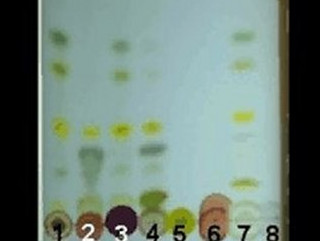 |
| Introductory and Supplementary Lessons |
Big Idea 1: Evolution | ||
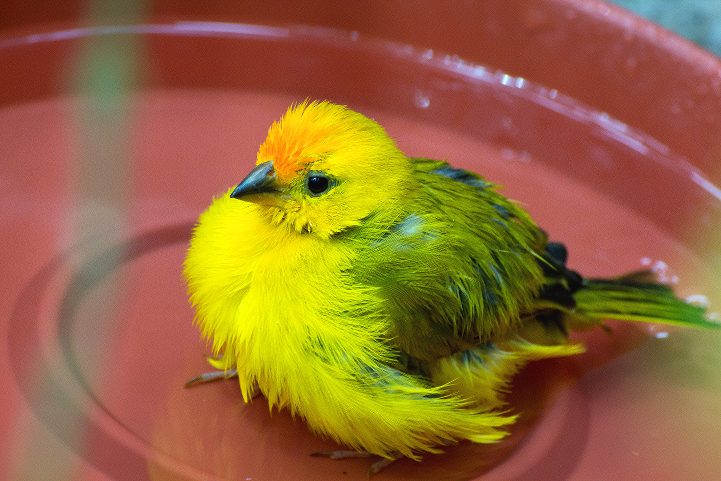 |
| Investigation 1 Artificial Selection |
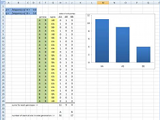 |
Hardy-Weinberg
AP | Investigation 2 Mathematical Modeling: Hardy-Weinberg |
 |
Comparing DNA Sequences
AP | Investigation 3 Comparing DNA Sequences to Understand Evolutionary Relationships |
Big Idea 2: Cellular Processes: Energy and Communication | ||
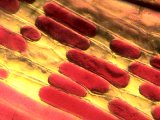 |
(Observing Osmosis in Living Cells) (Modeling Diffusion and Osmosis) | Investigation 4 Diffusion and Osmosis |
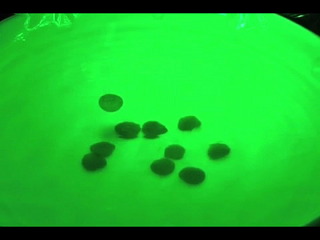 |
| Investigation 5 Photosynthesis |
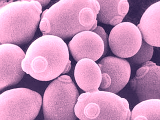 |
| Investigation 6 Cellular Respiration |
Big Idea 3: Genetics and Information Transfer | ||
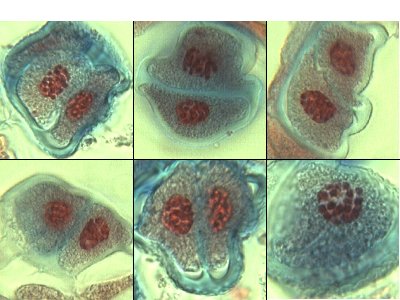 |
Modeling Mitosis
AP Modeling Meiosis AP | Investigation 7 Cell Division: Mitosis and Meiosis |
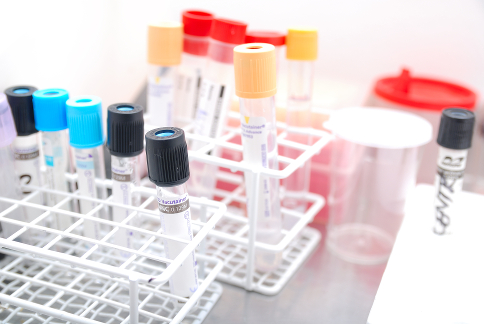 |
| Investigation 8 Biotechnology: Bacterial Transformation |
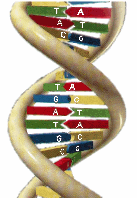 |
| Investigation 9 Restriction Enzyme Analysis of DNA |
Big Idea 4: Interactions | ||
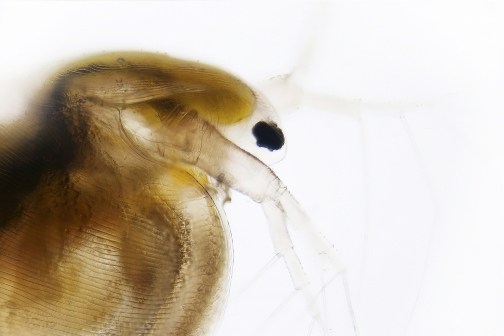 |
| Investigation 10 Energy Dynamics |
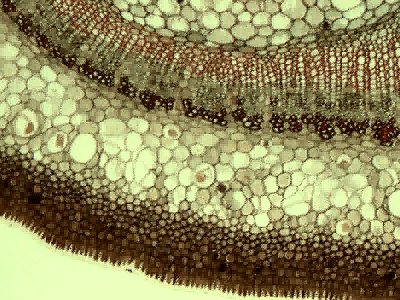 |
| Investigation 11 Transpiration |
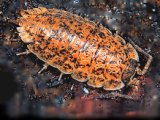 |
| Investigation 12 Fruit Fly Behavior |
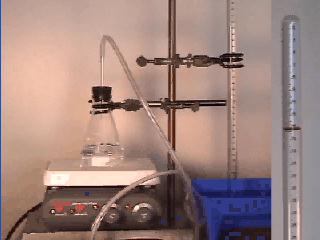 |
| Investigation 13 Enzyme Activity |
Experiential AP/IB Chemistry Lessons
 |
|
Preliminary & Supplementary Lessons |
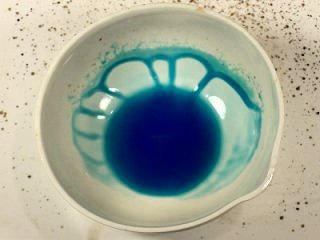 |
|
Chemical Formulas |
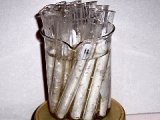 |
|
Moles and Concentration |
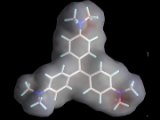 |
|
Kinetics |
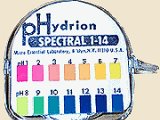 |
|
Acid-Base Reactions |
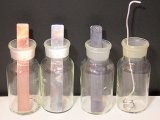 |
|
Redox Reactions |
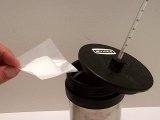 |
|
Thermodynamics |
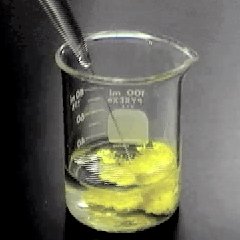 |
|
Precipitation |
 |
|
Analysis and Synthesis |
Experiential AP/IB Physics Lessons
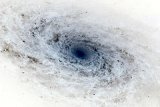 |
|
Introductory Lessons |
 |
|
Kinematics |
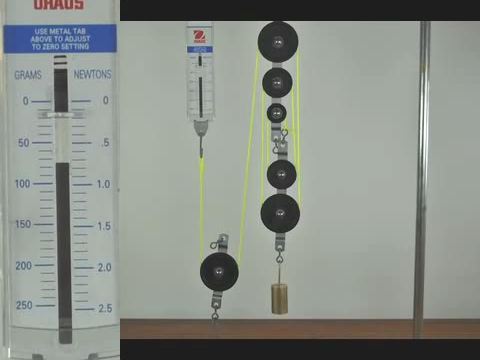 |
|
Statics |
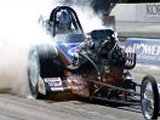 |
|
Newton's Laws |
 |
|
Work, Energy, Power |
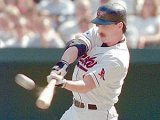 |
|
Momentum |
 |
|
Circular Motion and Torque |
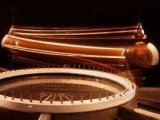 |
|
Oscillations |
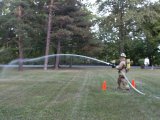 |
|
Fluids |
 |
|
Thermal Physics |
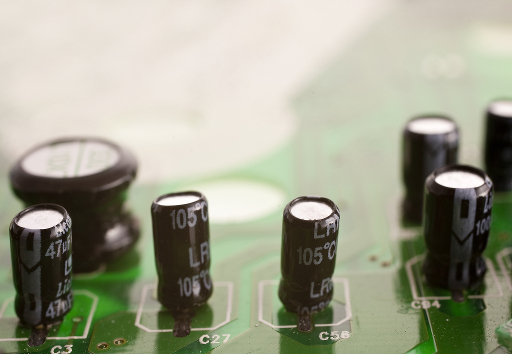 |
|
Electricity |
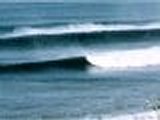 |
|
Wave Motion |
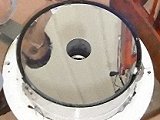 |
|
Optics |
 |
|
Atomic and Nuclear Physics |